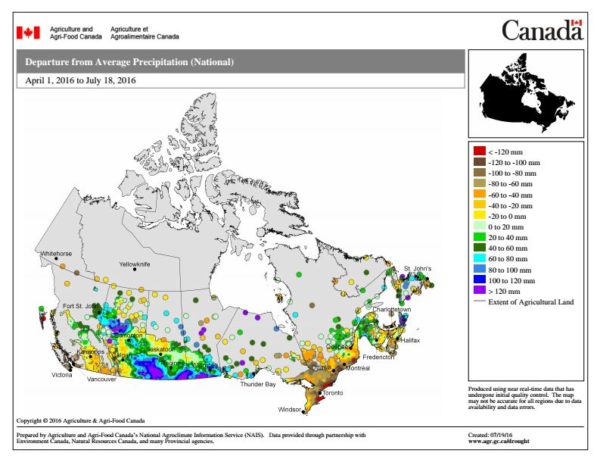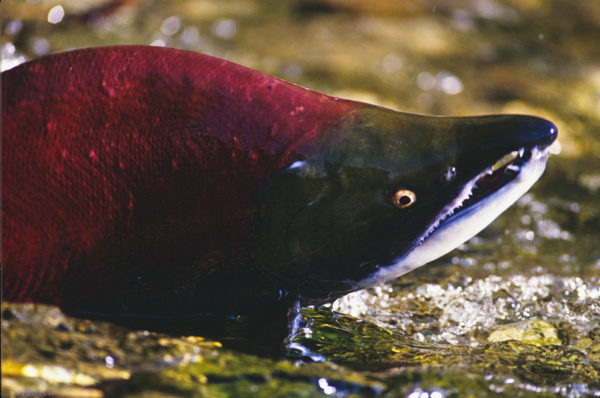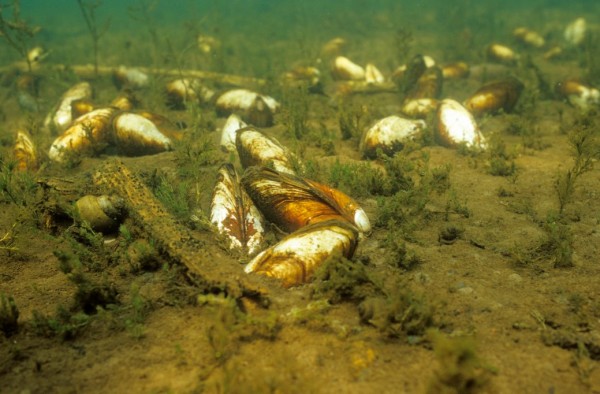How the hot, dry conditions impact wildlife
Many parts of Canada are experiencing a drought or headed there, and the impact isn’t just on crops, gardens and lawns. Droughts also spell trouble for the wildlife that depend on freshwater from our rivers, streams and lakes.

Some wildlife do well in hot dry conditions. Mosquitoes, though dependent on water to breed, only need a tiny puddle to survive and aren’t significantly affected. Salamanders and freshwater turtles will burrow in dried wetlands to survive a drought.
Trouble for salmon
Cold-water species are among those impacted by droughts more than others.
- Salmon require flowing cold water to migrate to their spawning grounds. But during drought conditions, low streams restrict the ability of salmon to swim up the river channel to their spawning grounds, or restricts its access to important habitat known as side channels.
- Low stream flow also means it can become too hot for salmon to survive, and disease outbreaks are more likely as the water temperature warms. In British Columbia, the flow of the Fraser River has been as low as 24% below average and temperatures have been as high as 1.6°C higher than normal. This could spell bad news for Canada’s largest sockeye salmon river.

Mussel fatigue
Low stream flow also leads to decreased oxygen availability in the water, which can kill species such as freshwater mussels because they are animals with limited mobility and cannot easily escape harsh conditions/

Land loving wildlife suffer too
Droughts and low flows can affect species that don’t live directly in the water:
- In drought conditions plants don’t put as much energy into growth, and some less drought-tolerant species will shrivel up and die. This results in less cover which provides shade from the sun and shelter from predators. Species like ground-nesting birds need cover to hide nests behind foliage.
- Droughts also cause a decrease in the production of flowers, berries, or mast (acorns and nuts), which animals depend on for food. Pollinators such as monarch butterflies depend on flowers to provide nectar as a food source. Deer, raccoons, foxes, opossums, squirrels, birds and chipmunks are just a few of the species who depend on berries and nuts for food.
The perilous hunt for water
Droughts may also force animals to move to new locations in search of wetter conditions:
- Moving may bring them into contact with urban areas and the potential for increased human-wildlife conflict.
- More animals coming into the cities could mean more animals hit on roads, or wildlife being seen as pests or nuisance animals as they forage close to homes looking for food and water sources.
- White-tailed deer are a familiar sight even in many busy urban areas. They are often seen as a pest as if there is not enough food for them to eat in wooded areas or parks, and will wander into people’s yards and feast upon well-manicured gardens and flower beds if they don’t get what they need in natural environments.
What can we do to ensure there is enough water wildlife?
WWF-Canada is working to influence how our freshwater is managed by taking into account the changing flows throughout the season. We are asking decision makers to consider low flow conditions when making water-use decisions, ensuring water flow is resilient to drought condition and protects species and their habitats.
Watch the video below to understand the importance of environmental flows.
While scientists are working to ensure we make better water management decisions, you can do your part to help keep water flowing in your local streams so that wildlife have enough water.
Try these tips:
- Find out how much water is flowing through your local river in real time. Check out the North American Water Watch map. The map uses a colour scheme from blue to red to show how different the current stream flow conditions are from historical conditions. If your dot is red, it means that the current stream flow is less than 10 per cent of the historical average – that’s low.
- Follow all municipal rules and water bans when watering your lawn. Try not to water during the hottest part of the day.
- Plant some of these drought-tolerant native plants.
Calculate your water-use footprint to find more ways to reduce water consumption in your home and learn other water conservation tips at WWF-Canada’s Count for Nature website.

